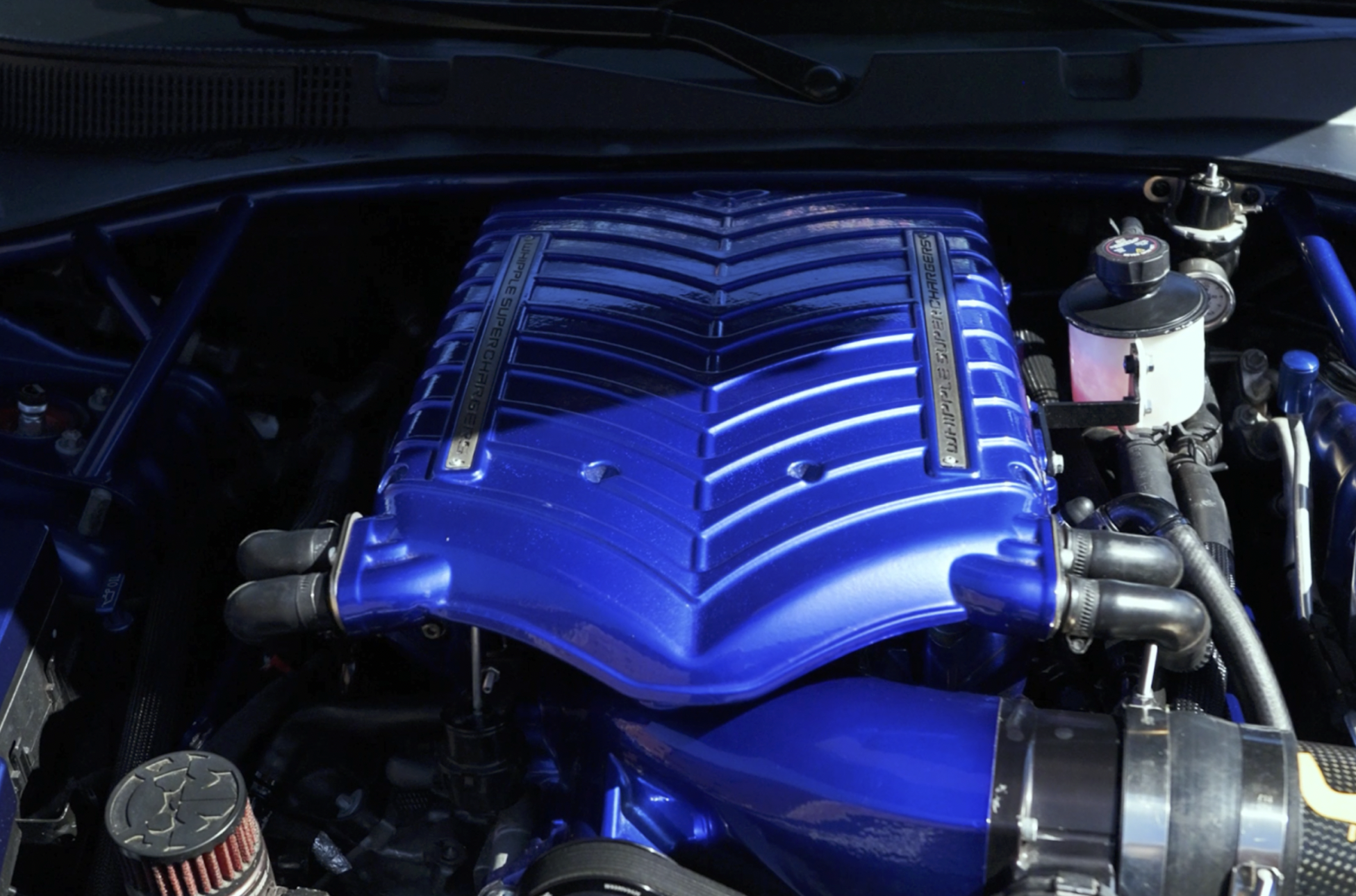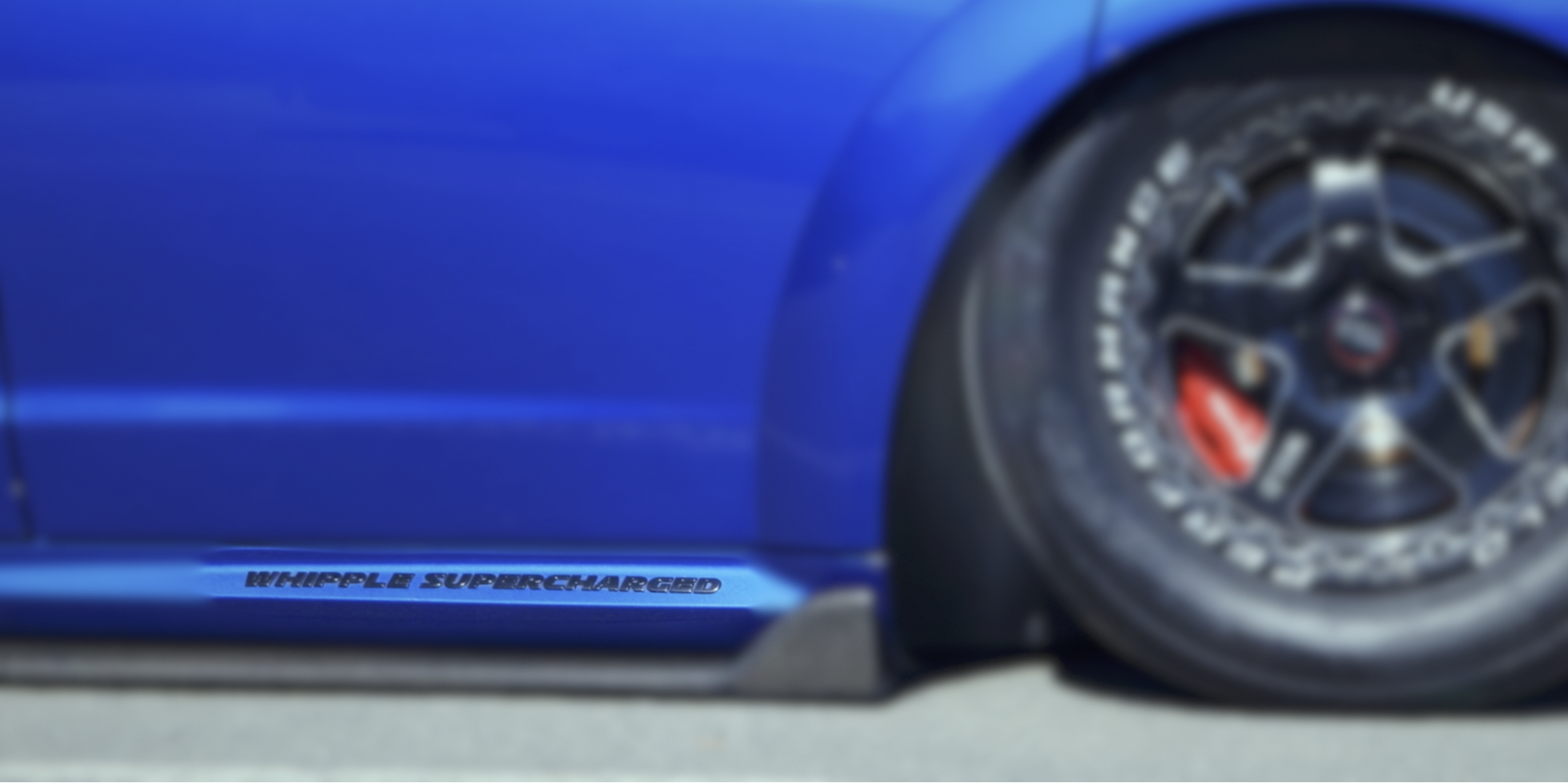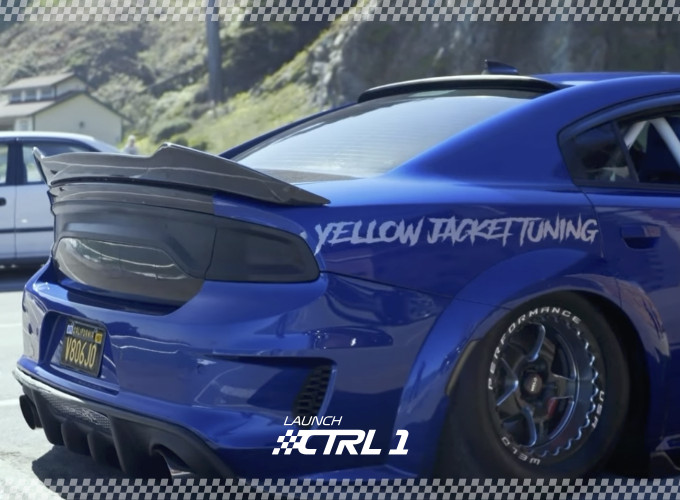When Jose Juarez (@392indigoblue2.0) decided to supercharge his 2020 Dodge Charger Scat Pack Widebody, he didn't just bolt on a blower and call it a day. As we discovered in our recent Charging Forward interview, transforming a factory 392 Hemi into a 950-horsepower monster requires extensive supporting modifications to ensure both performance and reliability.
"The difference between the 6.4 is the 392 Hemi, the 6.2 is the Hellcat engine," Jose explained during our conversation. "The Hellcat engine already has forged internals. So it's designed specifically for boost from the factory. The 392 engine is really efficient, but it's not really designed for a boosted application."
This fundamental difference between the Scat Pack's 392 and the Hellcat's 6.2L engine creates both challenges and opportunities for Charger owners looking to add forced induction. Let's dive into what it really takes to build a 392 that can handle serious boost.
Understanding the Factory 392 Limitations
Before adding boost, it's critical to understand what you're working with. The factory 392 Hemi in the Scat Pack:
- Produces 485 horsepower naturally aspirated
- Features cast (not forged) pistons
- Has connecting rods designed for naturally aspirated power levels
- Uses head gaskets and fasteners rated for naturally aspirated compression
- Comes with factory valve springs not designed for forced induction
"You have to use some kind of modification to the engine so it can, you can drive it safely. So you don't just blow it up and send a piston rod up to the moon and all that," Jose warned.
Starting Conservatively: The Initial Boost Setup
When Jose first added his Gen 5.3 Whipple supercharger, he kept the boost levels conservative:
"When I first got the Whipple installed by TPS Motorsports in Santa Clara, they had it tuned to 7 pounds of boost. That's where you want to go safe on the 392 because, like I said, the 392 engine, it's really efficient."
This conservative approach allowed him to enjoy supercharged power while planning the next phase of his build. At this boost level, the factory internals can usually survive, though longevity may be compromised.
Jose's initial modifications included:
- Whipple supercharger installation
- Professional tune limited to 7 psi
- Supporting fuel system upgrades
- Cooling system enhancements

The Full Build: What It Takes for Big Power
To reach his current 950 wheel horsepower level with 18+ pounds of boost, Jose worked with Yellow Jacket Tuning to completely rebuild the 392:
Engine Block Reinforcement While the 392 block itself is robust, additional support is needed for high boost applications:
- Main stud upgrades
- Factory cylinder wall thickness evaluation
- Proper honing and clearancing
Rotating Assembly The stock pistons and rods are the first items to fail under high boost:
- Forged pistons with proper ring gap for forced induction
- Upgraded connecting rods capable of handling boost
- Balanced rotating assembly
- Upgraded bearings
"The heads, the pistons, the rods, everything, the springs, all that was done, everything was fully swapped out," Jose explained.
Cylinder Head Work The factory heads need significant work to support high boost levels:
- Performance valve springs and retainers
- Upgraded valves or at minimum new valve seals
- Head studs rather than bolts for better clamping
- Performance head gaskets
- Port work if maximum power is the goal
Camshaft Selection Jose mentioned his specific cam choice: "The cam is a Texas Speed, a Stage 3 boosted cam."
Cam selection for forced induction differs from naturally aspirated builds:
- Less overlap is typically desirable
- Boosted-specific lobe profiles
- Appropriate duration for the intended powerband
The Bottom End Debate One interesting note from Jose was about the crankshaft: "The stock crank, oddly it's super strong. You don't ever have to swap that out. Unless you go like 2,000 horsepower."
This is consistent with what many high-power Hemi builders have found - the factory crankshaft is overbuilt and rarely the failure point in boosted applications.
Fuel System Requirements
Pushing 950 horsepower demands substantial fuel system upgrades:
"It's got the triple pump, all new fuel rails, injectors, lines, all that stuff. Comes with regulators," Jose detailed.
A complete fuel system overhaul includes:
- Higher flowing fuel injectors sized for your power goals
- Upgraded fuel rails to maintain pressure under high demand
- Multiple fuel pumps to ensure adequate supply
- Proper fuel pressure regulation
- Lines capable of handling increased flow
Jose's setup is E85-compatible, which helps with both power production and detonation resistance: "So it is tuned off E85. But it's not full E85. It's not flexible. I mean, I only run E85 on it, but I can put 91 in and it'll be just fine."
Ignition System Upgrades
Though often overlooked, proper ignition is critical for boosted applications:
"When you do a full system, and these when you boost it at certain times, you gotta do the MC delete with the lifters and all that, we've swapped all that out with the Hellcat lifters."
Jose's ignition modifications include:
- Upgraded spark plugs with appropriate heat range
- High-output ignition coils
- Quality ignition wires
- Proper tune for timing advance under boost
Cooling Considerations
Forced induction generates significant heat that must be managed:
"This does have an ice chiller," Jose mentioned. "There's a lot of different ice chillers you can get. You can either get the killer chillers, the big ones that go in the trunk... But I got the little one that's mounted in the front."
Cooling upgrades include:
- Intercooler system (integrated with the Whipple)
- Higher capacity radiator or additional cooling
- Oil cooler considerations
- Charge air cooling (ice box or similar)
- Heat extraction (hood vents, etc.)
Jose's custom carbon fiber hood with extensive venting helps manage heat: "I need a lot more air to go to the blower. I need that is a higher concern for me to get as much cold air as possible."
Transmission and Driveline Reinforcement
Getting power to the ground reliably requires substantial driveline upgrades:
"The transmission is built. It's got the A1 torque converter," Jose noted, along with mentioning his "one-piece driveshaft" and "huge race axles. I have a diff brace so that it doesn't break."
These upgrades are absolutely essential when nearly doubling the factory power output:
- Built transmission with reinforced internals
- High-stall torque converter matched to your power level
- One-piece carbon fiber or aluminum driveshaft
- Upgraded axles rated for your power
- Differential bracing and cooling
- Limited slip or locker differential
Professional Tuning: The Make-or-Break Factor
Perhaps the most critical element of a successful boosted 392 build is proper professional tuning:
"I highly recommend Alex Torres and his whole crew," Jose emphasized about Yellow Jacket Tuning. "I'm so happy with the work they did. No shop will touch this car but Yellow Jacket Tuning in Los Angeles."
A quality tune for a boosted application involves:
- Proper air/fuel ratios under all conditions
- Conservative timing advance to prevent detonation
- Boost control strategies
- Failsafe protections
- Multiple map options for different fuel qualities
- Custom tuning for your specific modifications
Jose warned about DIY tuning attempts: "If you didn't go to tune school, don't do it." This is especially true for boosted applications where the margin for error is much smaller.

The Cost Reality
Transforming a 392 into a reliable 950hp powerplant isn't cheap. When Jose mentioned his Whipple supercharger badge, he joked, "That little piece of plastic cost me about 10,000 just to get that little thing on there."
While the supercharger itself is expensive, the supporting modifications often equal or exceed that cost. Budget-conscious builders should consider:
- Starting with conservative boost (7-8 psi) on factory internals
- Planning a staged approach to modifications
- Focusing on cooling and tuning before maximum boost
- Building the bottom end before pushing for maximum power

Is It Worth It?
Despite the extensive modifications and cost, Jose's enthusiasm for his boosted 392 was evident throughout our conversation:
"The car, I swear to you, it just wants to do the wheelie. The power, it goes up. You feel the car just dig into the ground," he described when talking about launching the car.
For those considering a similar build, Jose offered this perspective: "Build it for yourself. Don't do it to impress people." This advice is particularly relevant for expensive, complex builds like a boosted 392, where the financial and time investment is substantial.
Final Thoughts: The Right Approach to Boosting Your 392
If you're considering adding forced induction to your Scat Pack, Jose's build offers several key lessons:
- Start with research: Understand what you're getting into before making the first modification
- Find the right professionals: Partnership with knowledgeable shops like Yellow Jacket Tuning was crucial to Jose's success
- Plan comprehensively: Consider the entire power delivery system, not just the engine
- Budget realistically: Account for supporting modifications, not just the supercharger itself
- Prioritize reliability: Build for longevity, not just maximum power
As Jose's 950hp daily-drivable Charger demonstrates, the 392 Hemi can be transformed into an absolute monster with the right approach. While it requires more extensive modification than the factory-boosted Hellcat platform, the results speak for themselves.
Want to learn more about Jose's boosted 392 build and see his 950hp Charger in action? Check out the full Charging Forward interview on YouTube or your favorite podcast platform!

